My top ten exhibitions of 2024
a list of the best-curated, most impactful museum and solo gallery shows IMO!
Hi Art Lover, it is the time of the year when critics publish their top ten lists. Mine includes the exhibitions that had the most impact on me and encouraged me to think and re visit (many I saw 3 or 4 times). Slowing down the pace of our consumption of art is a key theme for me. It is not sustainable for artists, writers, curators and consumers to not pause, reflect and read about what they are seeing and making. Deeper engagement enriches the experience for all, and that is reflected in these shows. Thank you for reading Art Hang, it’s funded entirely by paid subscribers. If you are a regular reader who shares it with friends and find value in my work, the best possible means of supporting the creation of more research, writing and content is with a paid subscription. This will gain you access to the full archive, bonus content, and a virtual art history course that will launch soon!
Here is my 2024 list:
“Foreigners Everywhere,” 60th Venice Biennale curated by Adriano Pedrosa.
The Venice Biennale was so beyond epic, my last Substack essay went into more detail but I have never seen any exhibition so radically and comprehensively de center the West. As critic Aruna D’ Souza stated, if only for a couple of months at the 60th Biennale, the art of the Global North did not lead the conversation, instead “it’s been put on mute, so we can finally hear the rest of the world.” This year, I saw vestiges of Adriano Pedrosa’s curatorial vision everywhere, most notably at the Whitney Biennial, all over this years Art Basel Miami Beach and at two stand out gallery shows that are on view right now in Miami: ELYLA Tierra Retumbante (this artist represented Nicaragua at the Biennale) at KDR and Patrick Dean Hubbell “You Guide Me Through,” at Nina Johnson Gallery.
QDQ: Raices y Vanguardias. Quito Design Week, Ecuador
I am including this personal career highlight as number my two, the exhibition I curated for the first ever Quito Design Week. Our goal was to promote the brilliant designers from Ecuador by encouraging a conversation between local creatives and the public. The colonial center/periphery idea that one has to look towards New York or Milan for “good design” is outdated (see Venice Biennale essay.) We questioned looking to Europe as the source for high-level modern design when Ecuador, one of the most biodiverse countries with a plethora of indigenous cultures, has everything and more. Hierarchical, colonial thinking has no place in this century. Ecuador (where I was born) has suffered several years of political chaos - including daily electricity shortages during the opening week of our event. Despite these issue the exhibition and the incredible educational programing is proof that resilience truly breeds creativity. As curator I focused on trends that are driving global design: the use of natural fibers, organic, modern lines, punchy graphics and a sense of movement or flow. I chose socially conscious design projects that incorporated local materials, choosing 25 finalists from over 250 submissions was brutal, so much talent, so much innovation, I cannot wait to see what the next QDW brings…
Self-Portrait on Sixth Wedding (Anniversary) Day (1906) *fun fact: this painting is thought to be the first nude self-portrait by a female artist in (mainly Western) art history.
3. Paula Modersohn-Becker, “I am Me” at the Neue Gallerie, NYC. This gorgeous and intimate museum retrospective was the first time a U.S. institution showcased this under-the-radar German Expressionist. I have been a fan since my undergraduate Art History professor Alessandra Comini- an early feminist scholar and the best lecturer ever- introduced us to her work in the early 90’s. Despite her talent, Modersohn-Becker’s life and career were tragically cut short. Her paintings are synonymous with motherhood, yet, after birthing her first child on November 2, 1907, and despite given three weeks of bed rest, she suddenly died from an embolic aneurysm. Like many women creatives, she was torn between caregiving and her artistic path. At one point she left her husband to study painting in Paris, eventually returning to Germany because of financial needs. I love her description of the new-found artistic freedom she found in Paris: “I, too, am different now, somewhat more independent, no longer so full of illusions. (...) Apart from the eternal worries about money, it is precisely the freedom I have had which was able to lure me away from myself.”
Belkis Ayón, Sin Titulo, 1993, Collograph
4. Belkis Ayón at David Castillo Gallery, Miami. Cuban artist Belkis Ayón (1967–1999) created her own universe in response to difficult political circumstances and a short career. She made the body of work at the exhibit during the repressive "periodo especial" in Cuba, an economic crisis that was brought on by the 1991 collapse of the Soviet Union. For Cubans it meant energy shortages, food scarcity and collective distress. As a working artist and art teacher this meant Belkis Ayón had limited supplies, in fact when she travelled overseas (aside from Havana she also showed in New York, Berlin, New Delhi, and Lima) she often brought materials back for her students. Despite these obstacles, the prints she made- large scale monochromatic collographs (a process where materials are glued to something like cardboard) depicting the goddess Sikan - a feminist icon for the ages- are pure magic.
5. Andrea Chung “Between Too Late and Too Early,” at MOCA, Miami. Andrea Chung’s poetic exploration of motherhood, extractive industries like sugar, slavery, colonialism, and toxic tourism is truly inspiring. I have seen it four times and I still get goose bumps every time
6. Seeing Rose B. Simpson, “Journey’s of Clay” at the Norton Museum of Art felt like a pilgrimage. Reverence is the word that comes to mind when describing and experiencing her work, in fact it the word Simpson herself used when describing her process and materials. The Norton show is a testament to her matrilineal ancestral heritage, as she is a fourth generation Pueblo potter. When describing what clay means to her family: “Clay was the earth that grew our food, was the house we lived in, was the pottery we ate out of and prayed with. So my relationship to clay is ancestral and I think it has a deep genetic memory. It’s like a family member for us.” As you walked through this exhibit you could not help but be in a state of awe.
Culpabilis, 2024, watercolor, gouache, and ink on paper
7. Walton Ford (b.1960), “Lion of God.” This site-specific exhibition in Venice literally stopped me in my tracks. I was lost and over heated from walking around when I stumbled upon a sign in front of a church announcing this exhibit. Talk about serendipity, I have been obsessed with Ford for years, and seeing his monumental watercolors in person twice this year was a mega treat. According to curator Udo Kittelmann, “[Ford’s] paintings are a plot about the arrogance of human nature. Yesterday, today, and tomorrow.” (Aside from his show in Venice I saw a smaller one at the Morgan Library) Ford’s paintings function as meticulous allegorical narratives addressing colonialism, industrialism, natural “science,” and the climate crisis. Also, for those of you thinking, all she features is female artists, behold a white male!
Mary Sully,“Indian Church,” colored pencil on paper.
8. Mary Sully: Native Modern, This Metropolitan Museum show of Dakota-Sioux artist Susan Mabel Deloria (1896–1963) aka Mary Sully was a total surprise and delight. Born on the Standing Rock Reservation in South Dakota, her art was not ignored while alive. Recently “discovered” and anointed into the Modernist canon via a solo show at the MET, she falls into the art world trend of FINALLY including older WOC into narrative of modern art. The image seen here was part of her series of abstract “personality prints” made in the 1920 and 1940. As a self-taught, Native American outsider artist who lived a reclusive life, this posthumous recognition aligns with two of the key themes of this year’s Venice Biennale. After she died in 1963 in Omaha, Neb. at the age 67, her artwork, about 200 color-pencil-and-ink drawings was transferred to her sister and stashed away in a cardboard box under her bed until 2006 when her great-nephew, Philip J Deloria, a history professor at Harvard, found them. (if you are a museum nerd like me watch her nephew talk about the “discovery” here) The Metropolitan Museum launched a Native American Arts Initiative in 2021 under the guidance of its first curator of Native American Art Patricia Marroquin Norby.
9. “Chicanx Xican-a.o.x. Body” at PAMM, Miami
This ground-breaking show of Chicano artists who use the body as a sit to communicate ideas about identity, race, decolonization and community is impressive. It explores the idea of "Brown Commons," a term penned by José Esteban Muñoz that explains the experience of existing within a cultural "in-between." And as someone who grew up in between Ecuador and the U.S. this is a theme that fascinates me.
10. Zilia Sanchez, Soy Isla, at ICA Miami. Born in 1927 in Havana, Cuba Zilia recently died at the age of 98. Her art is a poetic, minimal exploration of exile, the female body and displacement. Since the 70’s, working outside the mainstream art world from her studio in Puerto Rico. Sadly many of her work was destroyed during hurricane Maria. Why do we have to wait until women artists are in their last decades to “discover” them? Food for thought!
Until next year, Substack says I ran out of room… Thank you for being here, xoxo Vero





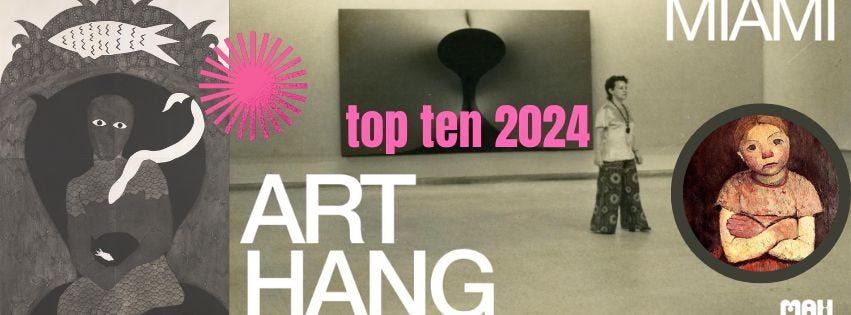

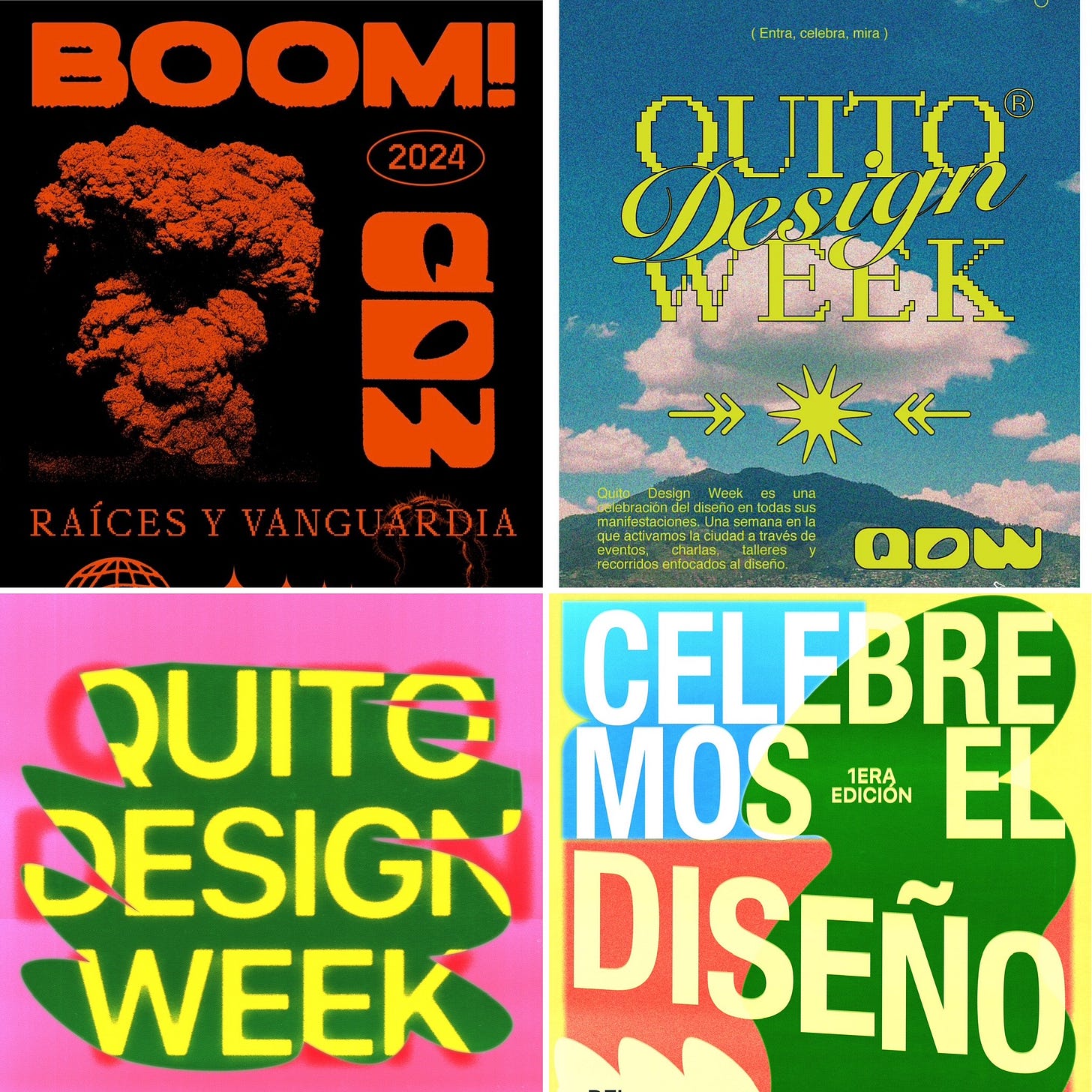

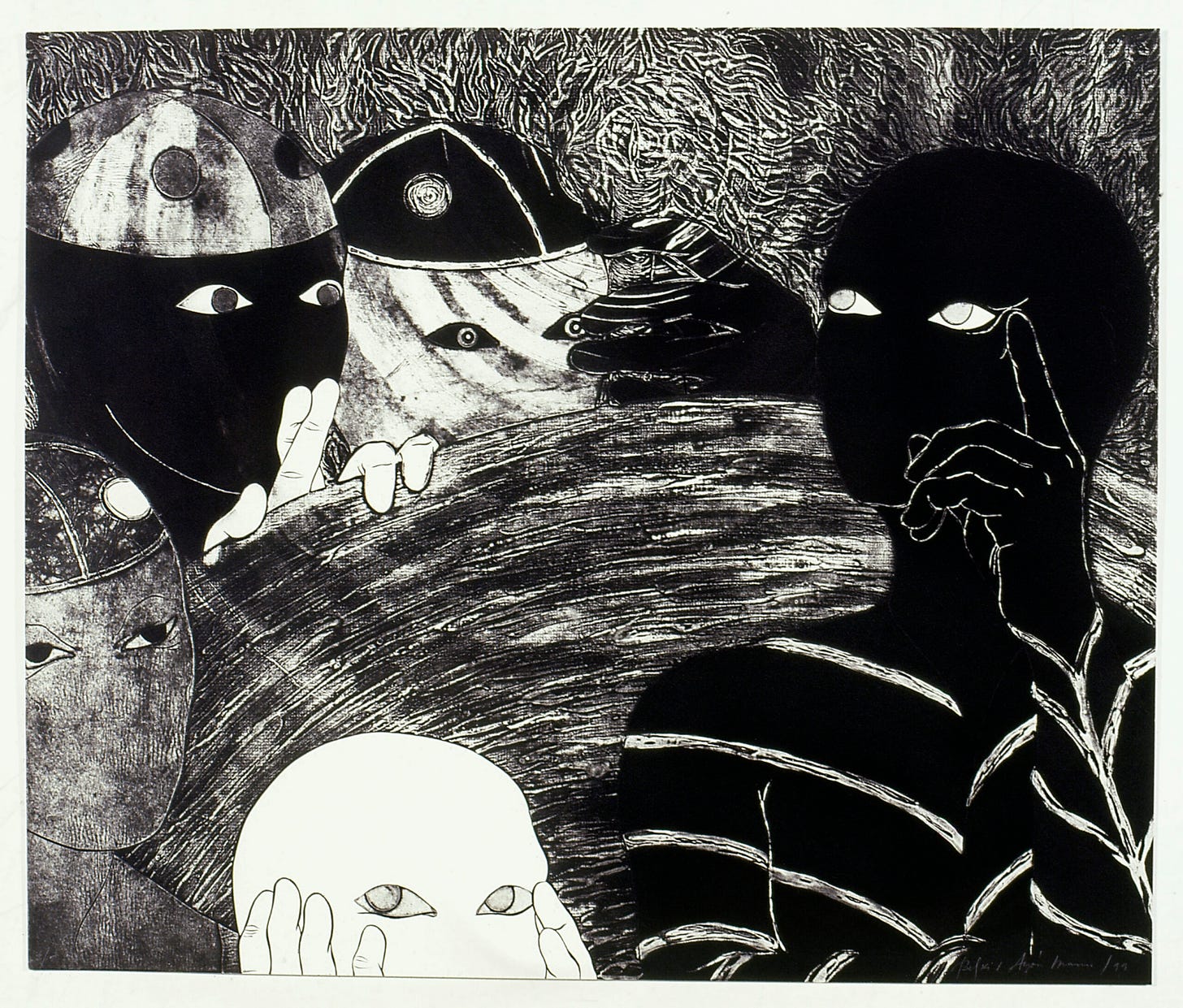
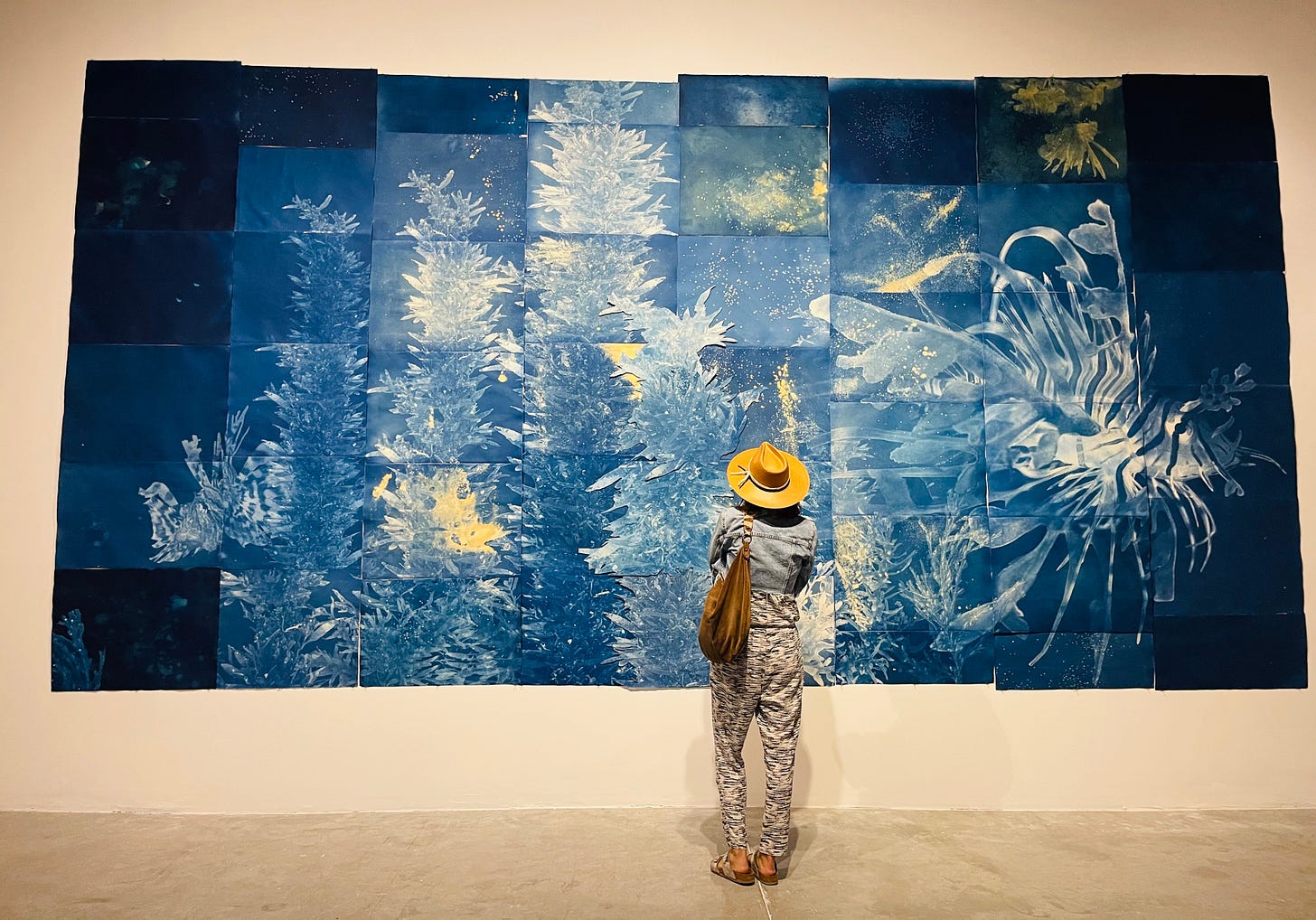


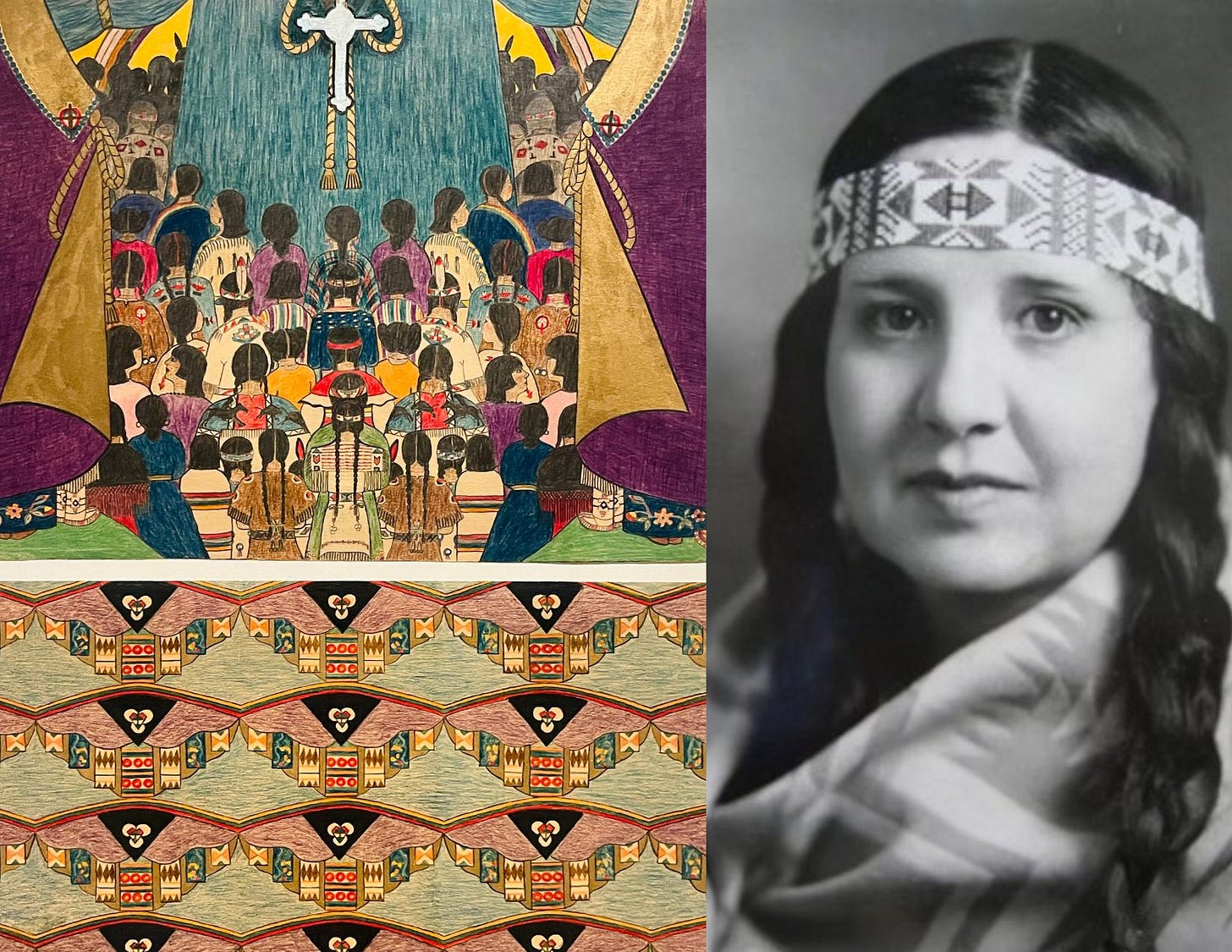

Fantastic as always, her feelings, her ability to analyze different works of art and her unparalleled writing, make Verónica a true treasure in the field👍🏼 Happy 2025